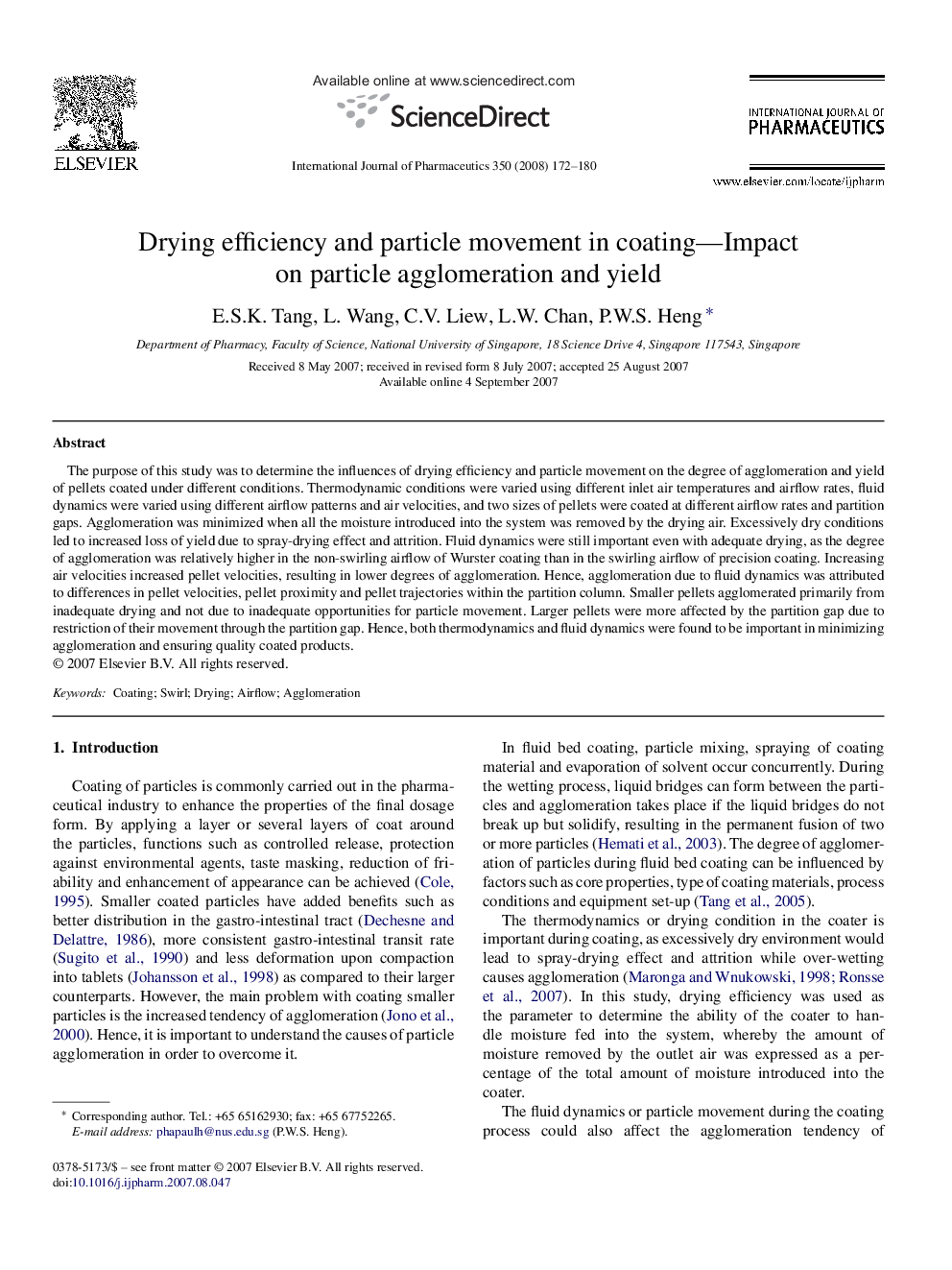| Article ID | Journal | Published Year | Pages | File Type |
|---|---|---|---|---|
| 2505711 | International Journal of Pharmaceutics | 2008 | 9 Pages |
The purpose of this study was to determine the influences of drying efficiency and particle movement on the degree of agglomeration and yield of pellets coated under different conditions. Thermodynamic conditions were varied using different inlet air temperatures and airflow rates, fluid dynamics were varied using different airflow patterns and air velocities, and two sizes of pellets were coated at different airflow rates and partition gaps. Agglomeration was minimized when all the moisture introduced into the system was removed by the drying air. Excessively dry conditions led to increased loss of yield due to spray-drying effect and attrition. Fluid dynamics were still important even with adequate drying, as the degree of agglomeration was relatively higher in the non-swirling airflow of Wurster coating than in the swirling airflow of precision coating. Increasing air velocities increased pellet velocities, resulting in lower degrees of agglomeration. Hence, agglomeration due to fluid dynamics was attributed to differences in pellet velocities, pellet proximity and pellet trajectories within the partition column. Smaller pellets agglomerated primarily from inadequate drying and not due to inadequate opportunities for particle movement. Larger pellets were more affected by the partition gap due to restriction of their movement through the partition gap. Hence, both thermodynamics and fluid dynamics were found to be important in minimizing agglomeration and ensuring quality coated products.
